The Raitt context
In the pages on this site there is much detail and many facts about the origin of the Raitts and their history, castles and lands in so far as we can find out about it several hundred years later. But this information is fairly widely dispersed on the site – some will be found under Illustrious Raitts and Religious Raitts, some under Raitt Locations, some under the Raitt Name and Raitt Arms and elsewhere, including Scottish Raitts and the Blog. This has not really been a deliberate policy, but caused by just adding additional material when I came across it. The site, after all, was not originally intended as a general research resource for all the Raitts of the world, but rather for my own particular ancestry. However, since the site has been available to the public on the web, others, often with an in-depth knowledge of their own Raitt branch and who had also carried out research into the name for their own edification, have come forward and offered to share the fruits of their labours.
One such person is Lindsay Raitt (of the Aberdeen Raitt branch who has traced his ancestry back to the Rev. Archibald Rait who was minister in Kintore after 1602 and thus the link to the Hallgreen family and hence to the Raits of that Ilk) has written several interesting papers on the Raitt origins, which he has kindly sent me for inclusion. The point about these essays is that while they contain pretty much the same information as I have discovered myself and that is contained on this web site, they do draw the facts – the evidence - together (in a way I have not) and put them in context. One paper also brings the main ancient bearers of the Raitt name (in whatever form) together in one place in an attempt to establish relationships between them. I was planning to get around to doing all this myself at some stage, but since the site was not so much about the early personages, but rather my own family, then this was not a high priority.
However, given these documents to hand, and with the kind permission of Lindsay Raitt who has rewritten them specifically for publication on this site, then they are included in the hopes that they will be of use to others researching the Raitt name. I have added further details to the information supplied by Lindsay (after consultation with him) and thus what is provided here can be considered pretty accurate (we hesitate to use the word definitive). The first essay provides a biography of Gervaise de Rathe, while the second deals with other members of the de Rathe family. A third covers the Raits of Hallgreen in The Mearns (Kincardineshire), while two others deal with the Hallgreen descendants in Angus - specifically the Raits of Anniston and the Raits of Cononsyth, Pitforthie and Inverkeilor. Another part will be forthcoming on the Raits of Aberdeenshire. Besides my Arbroath Raitts, there is also a page giving some other Raitts of Kincardineshire. Lindsay's latest essay traces the origins of the Rait name. I have also given some further speculations on our name.
Given all these new names, what I have also done is to extract all the various Raitt names throughout history and put them in one place. I have also constructed a family tree for the Raits of Hallgreen and their descendants based on our knowledge to date. And as part of the Raitt context I have also added below some further thoughts, history, information and observations about our possible (Norman?) ancestry and our earlier past. I have expounded also on the possible confusion surrounding Rait Castle in new blog entry.
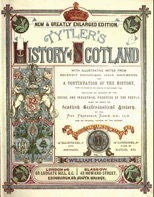

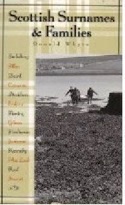
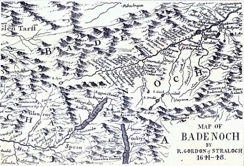
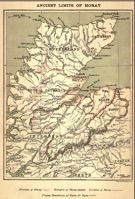
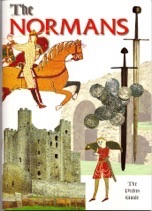
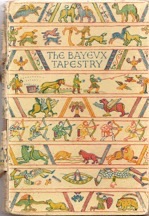
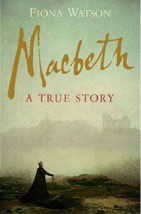
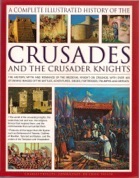
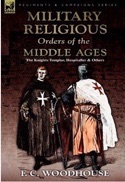
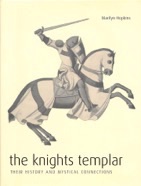
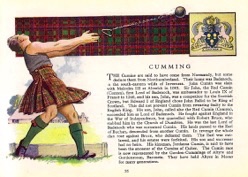
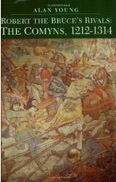
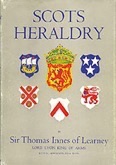
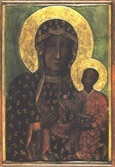
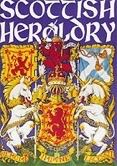
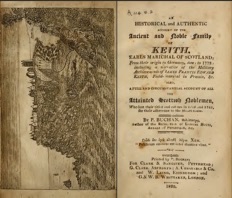
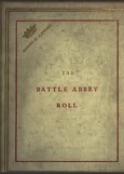
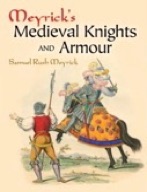

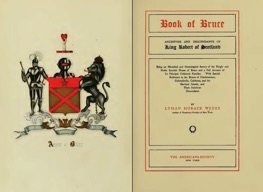
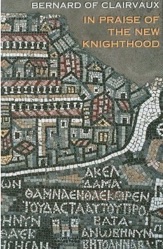
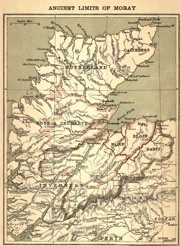
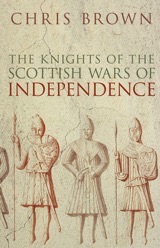
Knightly service
However, as always, the picture is not quite so simple. In the book by Chris Brown entitled The Knights of the Scottish Wars of Independence (published in 2008) there is a good overview of the rights and responsibilities, duties and obligations, allegiance and service of landowners and knights (admittedly mainly in Lothian, though it can be extrapolated to other parts of the kingdom.) For instance the point is made about the fickle nature of the nobility and the regularity with which they deserted one party for another. Ethics didn’t really come into it, compared to the economic, legal, social and political realties of life with the threats of disinheritance, poverty, imprisonment, even death. In the fourteenth century, the success of royal administrations depended on the support of war-leaders with the ability to draw men into their service. These men were often the minor gentry – landowners with estates to run, obligations to perform, and family and serfs to support. And if they wished to retain their property and possession, then they had to accept the authority of whatever party was in a position to exert governance. Many lands were granted directly by the crown and could be and were handed out and taken away almost at whim. They also reverted to the crown if the landowner died without issue. We have seen how various “Raitt” properties (e.g. Raite and Geddes, Dunnottar) changed hands several times.
Those who lost estates under Edward would have an incentive to join the Bruce in the hopes that if he won they would regain their lands and vice-versa. So if individuals wished to gain, retain or recover lands, they would be obliged to discharge military service of some kind (even if it was guarding a castle) to the person from whom they held the property. If they were on the losing side, then it was considered expedient to kiss and make up (accepted into the king’s peace) for both parties. It served no useful purpose to maintain an enemy when you could make him a friend by restoring or granting lands. So it is entirely possible that King Robert the Bruce restored the Rait lands and castle to Andrew de Rathe or his successors.
Robert the Bruce
Now, in the above mentioned Book of Bruce. Ancestors and Descendants of King Robert of Scotland by Lyman Horace Weeks and published by The Americana Society in 1907, it is stated that “Rait castle in Nairnshire, the home of Robert Bruce the second baron of Clackmannan, is of such ancient origin that there is no account of its beginning. It is an interesting and unique building about three miles south from the town of Nairn, and commands the coast between Nairn and Moray Firth. Tradition says that it belonged to the Raits of that ilk and afterwards to the Comyns.” I have re-read the relevant portions of this book and the above text is found under the geographic locations section. However, in the genealogical summaries under each Bruce name in the same book, it says:
“Robert Bruce, eleventh of the name, [and grandson of King Robert the Bruce] is on record as having received the castle of Clackmannan from King David II [son of King Robert the Bruce]., the charter, dated December 9, 1359, being to "delicto et fideli consanguineo suo Roberto de Bruys." By this charter Bruce received the castle and manor of Clackmannan, Gyrmanston, Garclew, Wester Kennault, Pitfolden, and other lands in the sheriffdom of Clackmannan. In October, 1364, he had other grants in the same sheriffdom and in January, 1367-68, lands in Rait within the sheriffdom of Perth. He was killed in the battle of Shrewsbury July 23, 1403.”
“Robert Bruce, twelfth of the name, son of the preceding, was the second baron of Clackmannan. In 1393, he received the lands and castle of Rait or Raith by charter from King Robert Bruce III. who called him "my beloved cousin." He died in 1405.” (NB. Wikipedia says that this Robert died between May 1389 and 1393 and his father was Thomas Bruce, while the House of Bruce website says that this Robert was the third baron of Clackmannan and Rate and also gives his father as Thomas Bruce.)
Whether Robert Bruce was the second or third baron, whether his father was Robert or Thomas, or whether he died in 1405 or before 1393 is actually irrelevant to us. What is important is that, contrary to what the Book of Bruce states (and contradicts itself on another page), Robert Bruce, baron of Clackmannan and Rait, did not reside in Rait Castle in Nairn, but rather at Rait in Perthshire. The American author is clearly confusing two Rait locations. Indeed, it just so happens that there was an old castle near Rait in Perth and the surrounding lands were owned by the Nairn family and were known as Nairn! The Bruce family owned the lands of Rait in Perthshire, including Fingask, from the 15th century (see more under Other Raitt Locations - Rait - where it is claimed that the de Raits lost their lands in Rait in the 1360s and were forced to relocate to Hallgreen Castle!) These Bruces were descended from the senior line of the Bruces of Clackmannan, which included Sir David Bruce, whose son, Robert Bruce held charter of Rate (Rait) in 1484, confirmed in 1488. The oldest parts of Fingask castle at Rait were built by Patrick Bruce in 1594.
However, I digress. I wanted to pick up on the point mentioned in the Castle Scotland entry for Rait Castle that King Robert I (the Bruce) removed the de Raits (de Rathes) from their castle after he was installed in 1306 because they were pro-Edward I in the Scottish Wars of Independence and both brothers Gervase and Andrew took an active part in battles in support of the English.
Exactly where this information comes from is not given and it will be worthy of further research. Maybe the de Raits were connected with the Comyns after all (don’t forget that Robert Bruce stabbed his rival claimant for the throne, John Comyn, at the high altar in Dumfries in 1306 and was, as a result, excommunicated) and Robert was having a further purge. However, since the infamous Alexander de Rathe who killed the thane of Cawdor fled Nairn around 1405 (so we are given to believe), then it is possible that the de Rait lands had been returned to the family at some point - possibly because they had made peace (see below.)
Why did the de Rathes choose to support Edward I and not rally to the cause of Scottish wanna-be Kings? Certainly Robert the Bruce was himself of Norman ancestry – but perhaps this points to the fact that Gervase and Andrew considered themselves still as incomers and were more at home in an Anglo-Norman English environment than a Scottish one. They had presumably gone along with Edward’s choice of John Balliol over Robert Bruce to be the next King of Scotland in 1292. Balliol reigned until 1296, when Edward invaded Scotland and hammered the Scots into submission. Gervase and Andrew were among many who swore allegiance to Edward I, now overlord of Scotland, at Berwick in 1296. As we know, presumably after the death of Gervase (in battle perhaps?), Edward subsequently gave his lands to his brother Andrew in 1297, who thereafter was a courier between various Scottish parties and the English king.
Jordan de Raat – first incomer?
Lindsay Raitt believes the de Rathes were Norman incomers and suggests that old English records might shed some light. We have certainly seen that Norman and Flemish knights and Templars were making their way to Scotland from England from at least 1052. Now, I have noted elsewhere (under Raitt name) that the Battle Abbey Roll of Norman families who supposedly came over with William the Conqueror in 1066 mentions the name of Jordan de Raat. The Roll is known to modern historians only from supposed 16th century copies of it published by Leland, Holinshed and Duchesne, all imperfect and corrupt. Holinshed's version is much the fullest (and seemingly the only one to contain the name of Jordan de Raat - under Rait). The versions of Leland and Duchesne, though much shorter, each contain many names found in neither of the other lists (neither contains Raat/Rait). A derivative work published in three volumes in 1889 by Catherine Powlett, Duchess of Cleveland, entitled Battle Abbey Roll (see under Raitt name), attempts to vindicate the existence of an original roll and contains biographical details of most of the prominent Anglo-Norman families known in Victorian times (here, however, Jordan de Raat is given the more usual spelling of Rait). There is a copy of the Battle Abbey Roll in the National Library of Scotland (NLS) which predates Leland's copy by two centuries and which was apparently not known to the Victorian antiquarians. This particular Roll is but one of several manuscripts in a document collectively known as the Auchinleck Manuscript, produced in London in the 1330s. The Roll seems to be little more than a list of surnames and disappointingly, I could not discover the name of Raat, Rathe or Rait in the online version of it. However, the 489th name in the list of 551 is given as Raac! Comparing the letters with others, then it seems to be a toss up whether the last letter is actually a "c" or a "t". The NLS team responsible for putting the manuscript online have clearly opted for the letter "c" - however, later copyists and compilers have obviously read it as "t" - possibly influenced by the, by then well-known name, of Rait.
However, the Duchess of Cleveland’s Battle Abbey Roll in three volumes states that Jordan de Raat held lands in Lincolnshire given to him by Henry III who reigned from 1216-1272 (“Jordan de Raat held in Lincolnshire temp. Henry III.—Testa de Nevill.”) The Testa de Nevill is the informal name of the mediaeval Liber Feodorum - a listing of feudal landholdings or "fees/fiefs", compiled in about 1302, but from earlier records, for the use of the English Exchequer. Originally in two volumes of parchment, the Liber Feodorum is a collection of about 500 written brief notes made between 1198 and 1292 concerning fiefs held directly from the Crown. I have looked through the online version of Testa de Nevill under Lincolnshire, but did not come across Jordan de Raat. However, as there have been various versions of the Book of Fees, as the Liber Feodorum is colloquially known, over the centuries with the transcript rearranged and enhanced and parts lost or unreadable, then maybe the name is not so recognizable since the original handwritten version. Also, the online version seems to be only part 1 of the book. The Duchess of Cleveland’s roll also mentions, under the heading Rait, several other Raits besides that of Jordan - these are also the Raits mentioned by other contemporary authors (see under Raitt name). The Duchess consulted various sources for her entries (many of which are very detailed concerning the Norman lineages of those taking part in the battle in 1966) including The Norman People (1874) and the Recherches sur le Domesday (1842). I too have looked through these documents online (only part 1 of the Recherches seems to be available) - but drew a blank for the name of Raat/Rait. The name Raat/Rait does also not appear in the Domesday Book Online for Lincolnshire or anywhere else in England.
One interesting question is, if the Battle Abbey Roll only lists the surname Raat (assuming it is this and not Raac) where did the first name of Jordan come from? Presumably from the charter of lands to him from Henry III. In any event if Jordan held lands in Lincolnshire in the early 1300s, then he cannot possibly be the same [Jordan de] Raat who fought at the Battle of Hastings in 1066 - though he could, of course, be a descendant. It would seem to me likely that the Duchess of Cleveland and her predecessors (at least Holinshed) in their attempts to establish family and lineage for all those names in the Roll, came across the name Raat in it and associated it with Rait and thus found out several snippets about this family from sources such as Nisbet and Black (see under Raitt name).
If the name in the early Roll really is Raac (rather than Raat) then this means that all subsequent references to Raat/Rait in the Duncess of Cleveland's volumes, as well as those of Holinshed and other later authors in connection with the compiled list of Norman knights who embarked with William the Conqueror are incorrect! (Of course, this does not negate the fact that there actually was a Jordan de Raat holding lands in Lincolnshire.)
I contacted the National Library of Scotland about the Auchinleck Roll and the name of Raat/Raac and their response was what I suspected. "I have looked at the original manuscript, f. 106v, under a magnifying glass, but the spelling is definitely 'Raac' rather than 'Raat'. Although, as you say, this is a hand where the -t- and the -c- look very similar, the letter here lacks the upward stroke at the top that is present in the letter -t-. Also, you'll see that the -t- is usually crossed in a straighter, more horizontal line than what we find at the top of this letter, while the top of the -c- is usually more curved. However, these differences are small, and so a later mis-copying is perfectly possible. On the other hand - unless we should really expect a person named 'Raat' to be on this list - it might be possible that 'Raac' presents an early form and spelling of a name quite different from 'Raitt'."
The name Jordan, of course, has associations with the River Jordan and it may be that his father or grandfather had been a Crusader. And perhaps, if the land granted to him was in the early part of Henry’s reign, then he may have gone North for some reason and ended up in Nairn and even been the builder of Rait Castle and father or grandfather of Gervase and Andrew! Possibly as recent incomers from England, this is why the de Rathes chose to support Edward I as opposed to the Scottish cause. As noted above there was a Jordan Comyn, probable son of the Earl of Buchan in the mid-thirteenth century.
The Earls Marischal
Since Alexander de Rathe, so far as we know, fled from Nairn to the protection of the Earl Marischal in the Mearns (Kincardineshire) after killing the Thane of Cawdor around 1405, then it is worth saying something about the Earl Marischals - if only in an effort to ascertain why Alexander might have fled there of all places. What is interesting here is that the hereditary Earl Marischals were named Keith (I do not propose to discuss their German origins) and the Keiths were in fact part of Clan Chattan which included the Mackintoshes (sworn enemies of the Comyns) and it was a Chattan who was allegedly given Rait Castle by Robert the Bruce when he became king.
In a book published in 1879 and entitled Manuscripts in the charter chest at Cluny Castle, Invernessshire relating to the Clan Chattan and Cluny of 1745 it is written:
“In these times, and long after, no sirnames were in use, so the clan went by the name of the chieff or leader, and of consequence were named Clan Caten. After having settled in the country they interchanged marriages with the first houses in the kingdom, and several very considerable houses there are of that origine, particularly the honourable and ancient house of Keith, the present representatives whereof are the two illustrious brothers, well knowen in Europe, Signeur George Keith, Hereditary Earle Marishal of Scotland, late Envoye Extraordinary from the King of Prussia to the King of France, and now Governour of the town and province of Neuffchatel in Suisse, with Signeur James Keith, Felt-Mareschal of his Prussian Majestie's forces, and Governour of Berlin, whose predecessor, a son of the chieff of Clan Caton, had distinguished himself in the year 839, when King Kenneth the Second of Scotland conquered the kingdom of the Picks, for his valour on which occasion King Kenneth gave him lands, and dismissed him with the rank of one of the great barrons of Scotland, about which time, by a very small transition, either by accident or with intention to distinguish themselves, their name changed from Chatan to Keith, and their barrony took the name of the family.”
In an earlier book by P. Buchan published in 1820 and titled An historical and authentic account of the ancient and noble family of Keith, earls marischal of Scotland - from their origin in Germany down to 1778, we read that the King knighted Robert, and for a reward of his services, created him hereditary great Marischal of Scotland. The King conferred on him many lands; the chief of which was called from his name, Keith Marischal, in East Lothian.
The same book notes that the Earls Marischal were also heritable Sheriffs of the Shire of Mearns and gives a brief history of the main Keiths and they were very much involved with the Comyns. The third Keith, Sir Robert, succeeded to his father, and married Elizabeth Cumming, daughter of John, chief of that Ilk; who, by King Alexander the 1st, was advanced to great honour and riches, and laid the foundation of many great families. The eleventh Keith, Sir John, succeeded to his father, and married Margaret Cumming, daughter to the Earl of Buchan. The twelfth Keith, Sir Robert, shared largely of the troubles wherewith his country was shaken; after the death of Alexander the 3rd, during the wars between Scotland and England, but would never endure to a compliance with a foreign power, or the enslaving of his Country, though near allied to the Cummings, who were deeply engaged in the English interest. His son, the thirteenth Keith, also Sir Robert, was a most zealous defender of his country's liberty against the English. He kept close by King Robert Bruce in all his travels: He was the chief instrument in gaining the battle of Inveury, which was the first that ever that great Prince won. At the battle of Bannockburn, he commanded five hundred horse. The King, mindful of his services, did, at the Parliament of Perth, anno 1320, bestow upon him the greatest part of his cousin, the Earl of Buchan's lands, which was forfeited for adhering to the English interest.
So even though they were related to and intermarried with the Comyns, they did not side with them, as the de Rathes did, and fight the corner of John Balliol and King Edward I of England against Robert the Bruce. Although Kings may have found it expedient to forgive and forget (see below), at a lower level there must surely have been old clan animosities still festering just a couple of generations later. Thus it is interesting that Alexander de Rathe went to the Keiths in the Mearns when they had opposed his family a hundred years earlier. The Earl Marischal at the time of 1405 when Alexander was supposed to have left Nairn was possibly the eldest son, of Sir William Keith, John, who took his father’s post as Marischal at the battle of Otterburn [1388], he being then indisposed. Or it may have been the son of John’s younger brother Robert who was named William and who “enjoyed the estate and honours of the family.”
However, it may be that there has been another confusion with dates and places by different writers. Nisbet opined that the name de Rathe was originally brought to the district in Robert III’s time (1390-1406), by a fugitive knight, who had killed the Thane of Calder and fled for protection to Keith-Marischal, and his son marrying the heiress of Halgreen. However, we know from official records that in 1341 during the reign of David II (1329-1371), Thomas Rait of Uras, who was the King's Shield Bearer, acquired certain property in the parish of Dunnottar (including the Castle - see under Raitt Residences) for which King Robert II granted confirmation in 1383. Thomas Rait had become a large proprietor in the Mearns (besides Dunnottar, he also had title to Uras/Oures and half the lands of Arrat) – a fact which proves the family to have been settled in the district at least half-a-century before the time that Alexander fled there. One assumes that Thomas had offspring: the charter dated October 1378 confirming by Walter Stewart, lord of Brechin, and Margaret Barclay, of a sale of lands by David de Arrat mentions several times his heirs or assignees. Thomas was clearly still alive in 1383 and his children or grandchildren, assuming he had any, would almost certainly have been still around twenty years later even though by this time the Keiths were in possession of Dunnottar, and as Earls Marischal were the most powerful family in the Mearns. So I am thinking that it was not so much the protection of the Earl Marischal that Alexander de Rathe sought, but rather shelter and a helping hand to get back on his feet from his kith and kin.
One further point can be made in this context, though it does not relae particularly to the Earls Marischal. John de Rait (of Rait in Perthshire) and family apparently lost their lands to the crown in the 1360s, resulting in them moving to Hallgreen Castle. Perhaps this is just another confusion; but if true, did they go there because they were related to Thomas Rait? Perhaps Thomas was John’s son. On the other hand Hallgreen Castle is believed to have been built not until 1376 according to a date above the door.
Name derivation and heraldry
Equally, even though I have pointed out under the Raitt Name that earlier writers have believed that de Rathe is derived from the Gaelic rath (later rait) – a fort or rampart - and that later Raitts took their name from various rath/rait place names, like Lindsay Raitt, I do think that does not seem to be the case here (though do re-read the two descriptions of Raths or Rathes being land or homesteads for the subsistence of a family!). The present (ruined) Rait Castle dates from the early 14th or mid-to-late 13th century and thus was almost certainly built by either Gervaise de Rathe – an important, powerful and presumably wealthy man – in keeping with his station and prestige or possibly an unknown predecessor. There may even have been an earlier typical wooden structure used by the de Rathes before they received the King’s favours. Thus, the de Rathes likely gave their name to their castle and dwelling place rather than vice-versa. It is also noted in the various descriptions of Rait Castle architecture that the edifice is rather unique (almost ecclesiastical) with windows of a form and design uncommon in Scotland – which may indicate that the builders – or at least designers - were not of Scottish origin. The Normans were renowned for their castles, churches and general architecture, so perhaps this is another pointer. Indeed the windows of Raitt Castle look decidedly Gothic - a style from the mid-12th century - and many early Gothic buildings (particularly cathedrals and churches) were financed and constructed by the Knights Templars using their principles of sacred geometry. Since this form of architecture was completely unknown in Europe at the time, it is surmized that the Templars may have brought back the key elements from their sojourns in the Holy Lands.
I believe too that the Raitt Coats of Arms have some significance. Why the cross? Why engrailed? Why black? (although Andrew de Rathe’s was red – is this a hark back to the black and red Comyns?!). Did Gervase or an ancestor go on a crusade? Or were they connected with the Templars and adopted a different kind of cross because they were not themselves members of that religious order (as noted, Rait Castle is said to have a decidedly ecclesiastical appearance.) When so many other Coats of Arms did not sport any semblance of a cross (particularly engrailed), why did the de Rathes? Because of his Arms, Lindsay Raitt suggests that Gervase de Rathe was perhaps connected to the Sinclairs from St. Lô in Normandy who bear the same Arms - although their shiled ground is argent, white rather than or, gold. I have also advanced this and other possibilities on the Heraldic Symbolism page, including the Mohuns who have a very similar Coat of Arms to the St Clairs and de Rathes. John de Mohun was at the Siege of Caerlaverock with King Edward I in 1300 where his Arms are described exactly as those of Raitt and he later fought at the Battle of Crecy in 1346 and that is where it is recorded that Alexander de Rathe was killed! Coincidence? Kinship? Or both?
And as for the St. Clairs - they have been associated with the Knights Templars for centuries and have owned Rosslyn Chapel since it was built in 1446. This Chapel, built after Templar times, was in fact built to commemorate them and their beliefs. Indeed, William St. Clair, descended from the Viking Rollo, 1st Duke of Normany, came to England with his cousin William the Conqueror in 1066, and was granted the Barony of Rosslyn in 1070 by Queen Margaret after he had escorted her to Scotland from Hungary to marry King Malcolm. Under the guidance of the St. Clairs of Rosslyn, the hidden Templar order in Scotland was responsible for the establishment of the craftsmason’s guilds that eventually developed into Freemasonry. Sir William St. Clair of Rosslyn, the last hereditary grand master of Freemasonry in Scotland resigned his position in 1736. (See also blog entry).
Now, here’s a thought - might the Coat of Arms of a black cross and a golden background be a secret, hidden, esoteric representation of the Knight Templar’s cult of the Black Madonna with her golden halo (gold also signifying kingly crowns)?!
The Comyns connection
As has been noted on the Rait Castle Owners page, the Thanedom of Rait was one of the oldest in Nairnshire being already on record in 1238. As was common at the time, knights or lords of the manor often took their surname from the name of the lands or estate they had been granted. We know that the de Rathes (or de Raites – spellings vary) had been granted lands around Nairn – and this would have been in return for loyal service to the King. The possibility is there that these early Raitts (Gervaise and his younger brother Andrew – and perhaps even the other de Rathes who gave allegiance to Edward I in 1296) were descended from, if not Macbeth’s Norman knights, then those crusading Templar knights who had possessions in Nairn in 1296, and most likely well before, in the area where Rait Castle and St Mary of Rait’s Chapel is to be found (see more under Rait Lands and Other Raitt Locations - Raitts.)
Now Clan Comyn (Cumming) played a major role in the history of 13th century Scotland and in the Wars of Scottish Independence and were instrumental in defeating the English at the Battle of Roslin in 1303. Clan Comyn was once the most powerful family in Scotland until they were defeated in civil war by their rival to the Scottish throne, Robert the Bruce. It is said that the early Lords of Rait were supposed to be Comyns. Like many of the families that came to power under King David I of Scotland, the Comyn clan was of Norman origin. The surname is either a place-name possibly derived from Comines, near Lille, in Flanders, or possibly derived from Bosc-Bénard-Commin, near Rouen in the Duchy of Normandy. Robert de Comines came to England with William the Conqueror in 1066 and was subsequently given lands in Northumberland. Richard Comyn, the nephew of Robert’s son William Comyn, chancellor to King David, established the family in Scotland with their seat of power being Ruthven Castle in Angus. His wife was Hextilda Fitz Uchtred, granddaughter of King Donald III. Their son William, born in Moray in 1163 married Marjory, Countess of Buchan, in 1210 and became Earl Buchan. Their son Walter acquired the lordship of Badenoch, adjoining Nairn in the south-west, in 1229. This lordship then passed to his nephew, John who was a descendant of William Comyn, Earl of Buchan, by his first wife, Sarah Fitz Hugh. John was to be known as "the Red" Comyn and his son, also John, Lord of Badenoch, was known as the "the Black" Comyn. He had a claim to the throne based on his descent from King Donald Bane. John was made one of the six guardians of Scotland after the death of King Alexander III in 1286 whose duty it was to act as regents for Margaret of Norway, heir to the Scottish throne. Margaret, however, died en route to Scotland. The Cummings of Altyre, descended from a brother of the Black Comyn, became established in Moray and were frequently in conflict with the Clan Chattan (particularly over the ownership of Rait castle).
Now, I tend to agree with Lindsay Raitt in his essay on the Biography of Gervaise de Rathe that the de Rathes were not Comyns. Why would such an illustrious family give up their proud and powerful surname to take the name from that of a minor location? Even an obscure scion of the clan would surely want to bask in the famous name. Indeed the Book of Bruce: Ancestors and Descendants of King Robert of Scotland notes that tradition says that Rait Castle (which was later the home of Robert Bruce the 2nd baron of Clackmannan - see below) belonged to the Raits of that ilk and afterwards to the Comyns. So the Raits were there first! And on the Castle Scotland website it is stated that the Raits appear to have been a very strong clan. If that is even half the case (I do not think they were actually a clan in the usual sense of the word), then that is another reason for their name being used for their seat rather than vice-versa. On the other hand, the de Rathes might have been related to the Comyns through marriage (it seems everyone else was!), or at the very least on very friendly terms with them. Certainly a royal letter mentions John Comyn, Earl of Buchan and Dominus Andreas de Rath in the same breath in 1297 - thus maybe the de Rathes lost their lands through association with the Comyns.
And it might be significant that in a book by Alan Young published in 1997 entitled Robert the Bruce’s Rivals: The Comyns, 1212-1314, which has a very lengthy list of primary, secondary and manuscript (official records) plus a large bibliography, the index makes no mention whatsoever of Rait Castle, the de Rathes, Nairn, Geddes, or Raitts and Bademoch is dismissed in a couple of pages.
It is also perhaps worthy of mention that “Willelmo Cumin comite de Buchan, Waltero Cumin and Jordano Cumin" were among those who witnessed the charter dated 28 June (no year) under which Alexander II, King of Scotland (1214-1249), confirmed a donation by "Ricardo Reuel" to Balmerino Abbey. It is not known whether the witnesses Walter and Jordan were sons of William Comyn Earl of Buchan but this appears probable. What is interesting is the name Jordan Comyn - the same forename as Jordan de Raat (see below) - is this mere coincidence, or evidence of naming a son after a close relative or friend?
Knights Templar lands
Now, many Knights Templar (an order of warrior-monks founded in France by Count Hughes of Champagne in 1118 to protect pilgrims to the Holy Lands) apparently fled to Scotland from France in the early 14th century because the entire country was under papal interdict as a result of the excommunication of Robert the Bruce, making it the one country in Europe beyond the pope’s writ. The Knights Templar offered their services to Bruce and led by William St. Clair were victorious with him at the Battle of Bannockburn in 1314. However, when Bruce later wanted to make his peace with the pope, he is said to have warned the knights to go underground, with the result that Templar properties in Scotland passed into the safe-keeping (in trust) of the Knights Hospitaller. According to contemporary and later French freemasonic sources, the vast treasure of the Knights Templar was taken to Scotland and ended up in the hands of the St. Clairs of Roslin (see below.) The St. Clairs were instrumental in developing Freemasonry in Scotland (now considered its birthplace) after many Templar craftmasons had fled there from France.
It would appear, though, that Templars were already in Nairnshire long before that. We know that Macbeth had Anglo-Norman knights in his retinue, some of whom may have been on the Crusades; and David I, himself, wanted to go on one but was dissuaded. The Knights Templar apparently had considerable possessions in the County of Nairn and Moravia (Moray), in 1296. The following extract is taken from The History of Nairnshire by George Bain (published 1893):
"...There is a writ extant granted in their [the Knights Templar] favour at Berwick, addressed to the Sheriff of Invernairn to put them in possession of their lands, they having made submission to Edward I. This was no doubt done. From the deed of conveyance of the Temple lands in the North from Lord Torphichen, the last Master of the Order, it appears that the following were the lands held here "Those two roods of arable land lying within the territory of the Burgh of Nairn, in that part thereof called [left blank provokingly!] possessed by John Rose, burgess of Nairn, and his sub-tenants; those two roods of arable temple land and house lying within the said territory of Nairn, possessed by Hew Rose of Kilravock and his sub-tenants; all and haill those our temple lands called the lands of Pitfundie lying in the said Sheriffdom of Nairn, betwixt the strype that conies from the lands of Brodie on the east, the fludder or myre upon the south side of the common muir called the Hardmuir on the south side, the lands of Penick and wood of Lochloy on the west, and the Euchcarse of Culbyn on the north, for the most part possessed by the lairds of Brodie, and their sub-tenants." They had also lands at Ardersier which are designated in old charters as Temple Land, Temple Cruik, Temple Bank, Bogschand. They lay partly in the vicinity of the town of Ardersier, between Connage and the sea, and between Flemington and the sea. A charter granted at Nairn refers to the locus trialis at Ardersier, doubtless an ancient place of trial by "wager of battle." The Temple lands of Ardersier were held by Davidsons and Mackays as portioners. They were acquired by Cawdor in 1626. The Temple lands at Brodie and elsewhere appear to have been disposed of about the same time, as in a Brodie, charter of date 1626 the lands of Pitfundie are included in the Brodie estate. The Templars were a religious and military order of Knights who escorted pilgrims to Jerusalem at a time when such pilgrimages were attended by dangers from robbers. They wore a white robe with a red Maltese cross on the breast, and at first were all of noble birth, The Knights of St. John of Jerusalem also had lands in Nairnshire. It is impossible now to identify them. When the Knights Templar were suppressed by Edward II their property was given to the Knights of St. John."
This is not the place to go into the history of the Templars and their mysteries, but it is worth mentioning here three things that I have learned. First, the Knights Templar venerated Mary Magdalene, who they believed was the wife of Jesus Christ and who bore him a son (or even more children), and most of the churches they built, particularly in their lands in France, are dedicated to her. Is it possible that St Mary’s Chapel in the Rait Castle grounds and dating from the time of the de Rathes there was dedicated to her? Many other churches, throughout Europe, are associated with the Black Madonna (see below) who is supposed to symbolize her. Second, there was a group of families who called themselves Rex Deus who claimed descent from the 24 hereditary high priests of Jerusalem. Essential spiritual truths were passed down from master to pupil until, in the 12th century, they decided to go public. However, it is said to be a matter of record that members of twelve leading aristocratic Rex Deus families met regularly at Roslin (the Barony of Rosslyn was owned by the St. Clairs of Normandy - see below) long before the first Crusade in and continued to do so for many centuries thereafter. And third, near Prestwick in Ayrshire in the vicinity of Raith, there are several graves of Knights Templars in the old ruined parish church of St Nicholas . It is intriguing to consider whether and how both the Templars and the place of Raith had any connection with Sir Roger de Rathe of Ayrshire, who swore fealty to Edward I, along with Sirs Gervaise and Andrew de Rathe, in 1296.
Macbeth and the introduction of Norman feudalism
Macbeth (arguably the first King of Scotland, who brought peace and prosperity in his 17 year reign from 1040-1057 and who was much later demonized for political reasons) appears to have been the first Scottish king to welcome Anglo-Norman knights into his service in 1052 – so, well before 1066. They were led by Osbern Pentecost, whom Macbeth may have encountered in Normandy on his pilgrimage to Rome in 1050 – the only Scottish King ever to have made the journey. Osbern, along with other Norman knights, had accompanied the English King Edward (the Confessor) on his return from Normandy in 1041. Religious, but weak, Edward found himself dominated by Godwin, Earl of Wessex, and his son Harold and so he appointed officials from Normandy to counter them. He gave his Norman friends lands in England, often strategically placed in problem areas. Sir Osbern built what was one of the first motte and bailey castle in England at Ewyas in Herefordshire on the English-Welsh border. On his own return from exile in 1052, Godwin subsequently purged Norman knights from the kingdom because of their growing influence – some returned from whence they came, but others fled to Herefordshire to seek shelter at Osbern’s castle. These Normans were pursued and forced to submit, not to Godwin, but to Earl Leofric of Mercia. Osbern then requested, and was granted, permission for himself, his squire and his garrison at the castle to go to Scotland and enter the service of Macbeth. And this may point to the fact that Osbern was at least on nodding terms with the Scottish King.
Macbeth seems to have introduced the technique of having his heavily armoured soldiers fight on horseback as these Norman knights did (although it has to be said that the Celts used cavalry and chariots against the Romans and lightly armed mounted warriors were known in Scotland over a millennium earlier), and he saw the value of the feudal system of giving lands to loyal supporters. Macbeth’s Norman knights were very probably given lands and offices in return for their service and they proved their worth in loyalty by valiantly fighting for him against Siward of Northumbria at Dunsinane in 1054 – a battle which they eventually lost along with their lives. Like other Kings in Scotland, Macbeth’s power base and royal residence was in Moray, which in those days encompassed what we know today as the shires of Inverness, Nairn and Banff.
A later successor in Scotland, Edgar, had English and French knights in his service, at least one of whom is recorded as being granted lands. David I, during his reign from 1124-1153, also granted large fiefs to Anglo-Norman and Flemish knights in return for service – these knights mainly coming from his newly-acquired earldom of Huntingdon in England. Throughout the twelfth century, a great English earldom covering a substantial part of the East Midlands was held by the Scottish royal family and a large number of families from this region settled in Scotland during this period. The major (Norman administrative) offices of state under David, such as chancellor, chamberlain, constable, marshal were held by highly-trusted foreigners – as may have been other new offices of butler, steward and doorward. David also introduced the office of sheriff, with the headquarters of the sheriffdoms usually being a royal castle. The chief one in Moray was Burghead - now ruined.
The northern sheriffdoms in Aberdeen, Banff, Inverness, Nairn became the focal points for towns; but in 1187, William I, David’s successor, established a new burgh, castle and sheriffdom at Invernairn. (Nairn had previously been incorporated in the sheriffdom of Inverness.) The first governor of the castle and sheriff of the county was William Pratt, who had the title of baron and who was descended from a Northumbrian family. King William (the Lion), although his residence was in Inverness, spent much of his time apparently at the castle in Nairn. Gervase de Rathe, of course, later held the office of Constable of this castle of Nairn. (Incidentally, the earliest name of a Nairn burgess was apparently Andrew Cumming – and it is this family which allegedly took possession from the Macintosh family of the lands of Raite and Geddes.) The process of planting knights in new fiefs, burghs and sheriffdoms was carried out more systematically under William I than David, with Angus and the Mearns being important areas of colonization This may be a reason why Alexander de Rathe fled there from Nairn in 1405 or thereabouts as opposed to elsewhere because of some degree of kinship with other knights in the region. Indeed, there is a very story (if it is true) that the de Raits from Rait in Perthshire had lost their lands in the 1360s and moved to Hallgreen Castle (see under Other Raitt Locations - Rait.)
In an earlier blog entry I commented about our possible Norman heritage and in his pieces on Gervaise de Rathe and other members of the de Rathe family, Lindsay Raitt also made some observations on their putative Norman origins. Since then I have been reading extensively on the history and events of Scotland in mediaeval times in an effort to learn and understand more. And there are always little snippets of facts that can tantalize us and possibly provide additional background to our ancestry. I was originally planning to make this a blog entry, but I think it has turned out too long for that! Besides adding new information, it also draws together details that have been included on other, separate pages.
The Province of Moray
To set the scene it is worth mentioning a few brief words about the area in which the de Rathes of Rait Castle lived and worked. At the time, Moray comprised the counties of Elgin and Nairn, the greater part of the county of Inverness, and a portion of the county of Banff, all called the Province of Moray before there was a division into counties. There are several older, accessible online, texts which give an overview of the region including: A survey of the Province of Moray: historical, geographical, political printed for Isaac Forsyth, bookseller in Elgin, in 1798; The History of the Province of Moray by Lachlan Shaw (new edition in 3 volumes published 1882); History of Nairnshire by George Bain (1893); and A History of Moray and Nairn by Charles Rampini (1897).
Kings of Moray were seen as serious rivals to the line of Malcolm Canmore and in 1130 his son, David I, finally succeeded in annexing the old kingdom. He brought groups of settlers from the royal lands around the river Tweed and these were settled on good land along the southern coats of the Moray Firth. The development of the administrative functions of the royal castles in Moray (for instance at Inverness and Nairn), which became the seats of royal sheriffs before the end of the 12th century, were intended to dominate the region and integrate Moray into David’s kingdom. The incomers were settled into planned communities which became burghs having an economic and juridical purpose as well as furnishing the king with a ready supply of support. They also served as a powerful means for introducing to the ordinary people of Moray the new French (Norman) culture that David was establishing throughout his kingdom.
In the later twelfth and thirteenth centuries there was a well-established and numerous nobility of aristocratic colonists in Moray, largely comprising cadets of families who were already prominent landowners in the south of the country. What is interesting is that apparently there is no evidence for such nobility there in the early part of the 12th century.
Falling within the Province of Moray was Badenoch - one of the most interior districts of Scotland and adjoining Nairn. Badenoch, according to Alexander MacBain in his work Badenoch: it’s History, Clans and Place Names (1890), “lies on the northern watershed of the mid Grampians, and the lofty ridge of the Monadhliath range forms its northern boundary, while its western border runs along the centre of the historic Drumalban. Even on its eastern side the mountains seem to have threatened to rim a barrier across, for Craigellachie thrusts its huge nose forward into a valley already narrowed by the massive form of the Ord Bain and the range of hills behind it. This land of mountains is intersected by the river Spey, which runs midway between the two parallel ranges of the Grampians and the Monadhliath. The lowest level in the district is where Kingussie, the “capital,” is located and the source of the river.”
Badenoch does not appear in early Scottish history and it is not until the thirteenth century that we hear of it by name. In 1229, Walter Comyn became the feudal proprietor of Badenoch, for he made terms with the Bishop of Moray in regard to the church lands and to the natives or bondsmen in the district. It is supposed that Walter Comyn came into the possession of Badenoch by the forfeiture and death of Gillescop, a man who committed some atrocities in 1228 ‐ such as burning the (wooden) forts in the province of Moray, and setting fire to a large part of the town of Inverness (an action copied in 1390 by the later Wolf of Badenoch, King Robert the Bruce’s son). William Comyn, Earl of Buchan, the justiciar, was entrusted with the protection of Moray, and in 1229 Gillescop and his two sons were slain. Thereafter we find Walter Comyn in possession of Badenoch and Kincardine (a parish nearby – not the Mearns), and it is a fair inference that Gillescop was his predecessor in the Lordship of Badenoch.
Badenoch was the principal seat of the famous and powerful Clan Chattan. The territory held by this clan, however, was far from being confined to Badenoch; for at the acme of their power in the 15th century, Clan Chattan stretched across mid Inverness-shire, almost from sea to sea. The Clan Chattan were the inhabitants of this vast extent of territory, but the ownership or superiority of the land was not theirs or their chiefs', and the leading landlords they had to deal with were the two powerful Earls of Huntly and Moray. From them, as superiors, Mackintosh, chief of Clan Chattan, held stretches of land here and there over the area populated by the clan, and his tribesmen were tacksmen or feu-holders of the rest.
It seems that everyone wanted control of Badenoch and the district (or more precisely the Castle of Rait) was in contention between the Comyns and the Mackintoshes. Mackintosh of Mackintosh held a feu of the lands of Rait in Badenoch in the 16th century. The 17th century saw a revolution in landowning in the district, Mackintosh still held Rait, but we find other proprietors in the area such as Gordon, Huntly, Cluny, Invereshie, Belleville and Grant. I have given much detail on the history and ownership of the lands of Rait under Other Raitt locations – Raitts and in a blog entry I have tried to resolve the difficulty of which Rait Castle is being referred to in the old texts.

